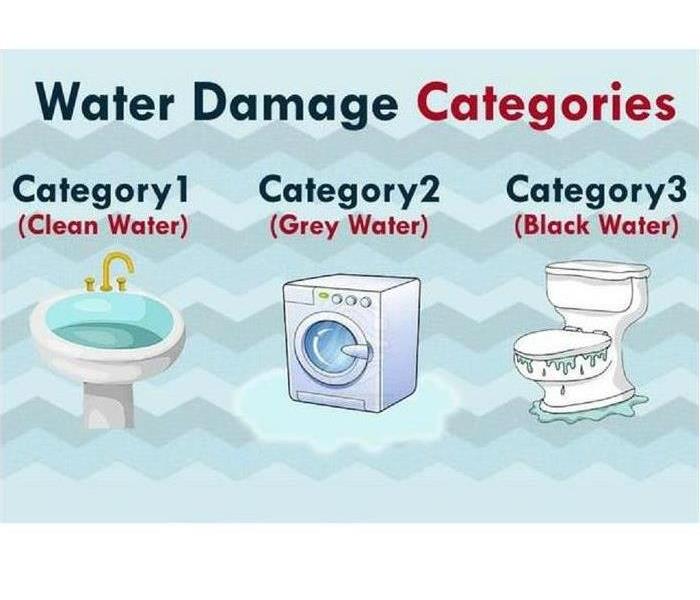Categories of Water Contamination
1/7/2019 (Permalink)
Here at SERVPRO of Poolesville/Clarksburg/Damascus safety is our first priority. Knowing how to react when you experience a water loss is vital to you and your families’ health. All water poses potential health problems. It is the single leading cause of disease in the world. Understanding the different types of water contamination levels and their health risks can make a big difference in restoration process as well as minimize your chances in becoming sick. This information will help you determine if you need to evacuate the home or not. Below you will find a description of the different types of water contamination categories.
Category 1 – Clean Water: This water originates from a sanitary water source that does not pose substantial harm to humans. This may include broken water lines, tub or sink overflows with no contaminants, appliance malfunctions involving water supply lines, melting ice or snow, falling rain water, broken toilet tanks and toilet bowls that do not contain contaminants or additives.
Category 2 – Gray Water: This water contains a significant level of contamination and has the potential to cause discomfort or sickness if consumed by or exposed to humans. Examples of this include discharge from dish washers or washing machine overflows, toilet overflows, toilet overflow with urine, but not feces, and other sources where water has been contaminated.
Category 3 – Black Water: This water is grossly contaminated and may contain pathogenic, toxigenic or other harmful agents. Elderly, children under the age of 2, and people with respiratory issues should not occupy the facility until the building safe. Examples of Category 3 water are all forms of flooding due to sewage, flooding due to sea water or rain fall (rain, natural disaster), and colored water,
Keep in mind that every water loss is different, and determining the type of water category you have is the first step towards figuring out what the next step is. Once we establish the water category we put together our plan of action.
The information above was provided by The Institute of Inspection Cleaning and Restoration Certification (IICRC). We hope we’ve provided a better insight on the different water types. Remember that your SERVPRO of Poolesville/Clarksburg/Damascus is always here to help, and make it “Like it never even happened.”



 24/7 Emergency Service
24/7 Emergency Service
